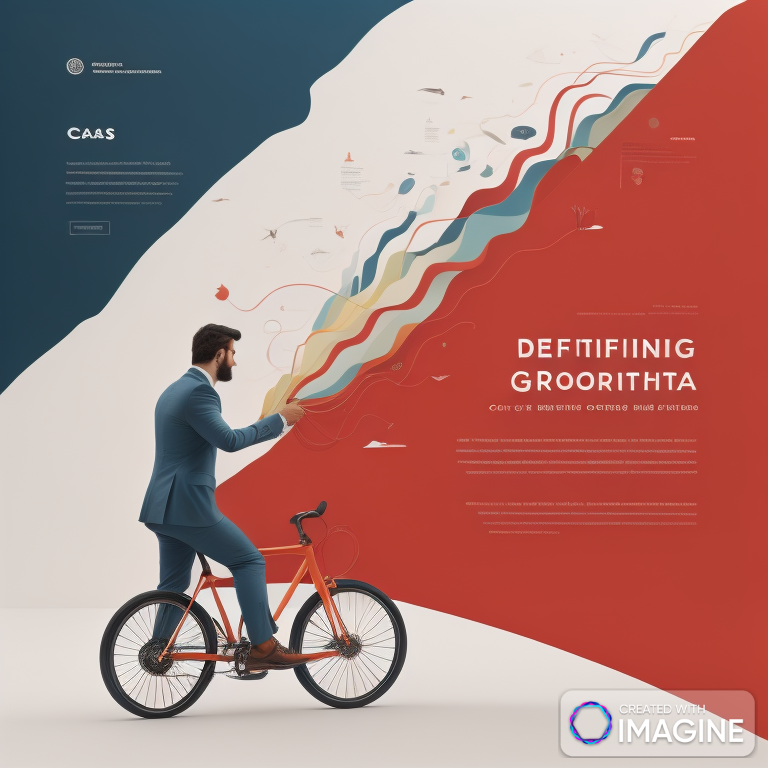In today’s dynamic and ever-evolving business landscape, the need for adaptability and responsiveness has never been more crucial. Enter Agile methodologies – a set of principles and practices that have revolutionized the way businesses approach project management and development. Let’s delve into the world of Agile and explore how its application can drive innovation, enhance collaboration, and ultimately lead to greater success.
Understanding Agile Methodologies:
Agile methodologies originated in the realm of software development, where traditional approaches often faced challenges in keeping up with changing requirements and customer needs. The Agile Manifesto, crafted in 2001 by a group of forward-thinking developers, emphasizes four key values:
- Individuals and interactions over processes and tools.
- Working software over comprehensive documentation.
- Customer collaboration over contract negotiation.
- Responding to change over following a plan.
Iterative Development and Flexibility:
At the core of Agile is the concept of iterative development. Instead of working on a project in a linear fashion, Agile teams break it down into small, manageable increments known as “sprints.” These short development cycles, usually lasting two to four weeks, allow for continuous reassessment and adaptation to changing priorities.
Key Agile Methodologies:
Several Agile frameworks have emerged over the years, each offering a unique approach to implementing Agile principles. Some of the most widely used methodologies include Scrum, Kanban, and Extreme Programming (XP). Scrum, for example, provides a structured framework for managing projects through roles like Product Owner, Scrum Master, and the Development Team, while Kanban focuses on visualizing work and optimizing flow.
Benefits of Agile in Business:
- Enhanced Flexibility: Agile methodologies empower teams to respond quickly to market changes and customer feedback, enabling businesses to stay ahead of the curve.
- Improved Collaboration: By fostering regular communication and collaboration, Agile breaks down silos within organizations, creating a more cohesive and efficient working environment.
- Customer Satisfaction: Agile places a strong emphasis on customer collaboration, ensuring that the end product aligns closely with customer expectations and needs.
- Reduced Risk: The incremental nature of Agile development allows for early detection and mitigation of issues, minimizing the risk of delivering a product that doesn’t meet requirements.
- Increased Productivity: Short development cycles and regular feedback loops lead to increased productivity as teams can quickly adjust priorities and focus on delivering high-value features.
Challenges of Implementing Agile:
While the benefits of Agile methodologies are compelling, it’s essential to acknowledge the challenges organizations may face during implementation. Common obstacles include resistance to change, difficulty in adapting to the Agile mindset, and the need for ongoing training and support.
Scaling Agile for Large Enterprises:
Scaling Agile practices to suit the needs of large enterprises involves frameworks like the Scaled Agile Framework (SAFe), Large-Scale Scrum (LeSS), and Disciplined Agile Delivery (DAD). These frameworks provide structures that enable multiple Agile teams to collaborate effectively, ensuring alignment with organizational goals.
Continuous Integration and Continuous Delivery (CI/CD):
Agile methodologies integrate seamlessly with CI/CD practices. By automating the integration and delivery processes, teams can streamline development, reduce manual errors, and ensure that new features reach customers faster. This aligns with the Agile principle of delivering working software frequently.
Empowering Cross-Functional Teams:
Agile promotes the concept of cross-functional teams, where members possess diverse skills necessary to complete a project. This not only fosters collaboration but also allows for a more holistic approach to problem-solving. Cross-functional teams are better equipped to adapt to changes and deliver value independently.
Emphasis on Customer Feedback:
Customer feedback is a cornerstone of Agile methodologies. Regular interactions with customers, through methods like demos and reviews, ensure that the product remains aligned with their expectations. This iterative feedback loop contributes to the creation of products that genuinely address user needs.
Measuring Success with Key Performance Indicators (KPIs):
Agile success is often measured using various KPIs, such as velocity, lead time, and release frequency. Velocity, for instance, reflects the amount of work completed in a sprint, providing insights into team productivity. These metrics aid in continuous improvement by identifying areas for optimization.
Embracing Change as a Competitive Advantage:
Agile methodologies embrace change as a fundamental principle. Rather than resisting change, Agile teams view it as an opportunity for improvement. This adaptability positions businesses to respond swiftly to market dynamics, making change a competitive advantage rather than a disruption.
Lean Thinking and Waste Reduction:
Agile methodologies draw inspiration from Lean thinking, emphasizing the elimination of waste in processes. By continuously assessing and optimizing workflows, teams can minimize unnecessary steps, reduce delays, and enhance overall efficiency. This lean approach contributes to delivering value more rapidly.
Cultivating a Culture of Continuous Improvement:
Agile goes beyond being a project management methodology; it cultivates a culture of continuous improvement. Through regular retrospectives, teams reflect on their processes, celebrate successes, and identify areas for enhancement. This commitment to learning and adapting positions organizations for long-term success.
Balancing Predictability and Adaptability:
Agile strikes a delicate balance between predictability and adaptability. While traditional project management approaches often prioritize detailed plans and rigid timelines, Agile acknowledges the unpredictability of complex projects. It provides a framework for managing uncertainty while maintaining a focus on delivering value.
Emphasizing Agile Leadership:
Agile methodologies highlight the importance of leadership that supports and nurtures Agile principles. Agile leaders focus on removing impediments, empowering teams, and fostering a culture of trust. This leadership style encourages open communication and enables teams to make decisions collaboratively, ultimately driving innovation and success.
Embracing DevOps Practices:
Agile and DevOps complement each other seamlessly. DevOps practices, such as continuous integration, continuous delivery, and automated testing, align with Agile’s principles of delivering working software frequently. This collaboration between development and operations teams ensures a more streamlined and efficient delivery pipeline.
User-Centric Design and Agile:
Agile methodologies integrate well with user-centric design practices. By involving users in the design and development process through techniques like user stories and usability testing, Agile ensures that the end product not only meets technical requirements but also satisfies the user’s needs and expectations.
Managing Distributed Teams:
As the workplace becomes increasingly globalized, Agile methodologies provide strategies for managing distributed teams effectively. Agile principles, combined with tools like video conferencing and collaborative platforms, facilitate seamless communication and coordination among team members located in different geographical locations.
Fostering a Culture of Innovation:
Agile methodologies encourage a culture of innovation by valuing experimentation and learning from failures. Teams are empowered to take calculated risks, knowing that they can quickly adapt and pivot based on feedback. This mindset of continuous experimentation contributes to the development of groundbreaking ideas and solutions.
Agile for Non-Software Projects:
While Agile’s roots lie in software development, its principles are applicable beyond the tech industry. Various sectors, including marketing, HR, and finance, have embraced Agile to manage projects more efficiently. The flexibility of Agile methodologies makes them adaptable to different project types, fostering a culture of agility across diverse business functions.
Prioritizing Technical Excellence:
Agile methodologies emphasize the importance of technical excellence to ensure sustainable development. This involves maintaining clean code, investing in regular refactoring, and upholding high-quality standards. Technical excellence contributes to the long-term viability of the product and reduces the accumulation of technical debt.
Agile Metrics for Continuous Improvement:
Agile teams utilize metrics to track progress and identify areas for improvement. Metrics such as burndown charts, cycle time, and cumulative flow diagrams provide valuable insights into team performance. Regularly analyzing these metrics enables teams to make data-driven decisions and continuously enhance their processes.
Encouraging Self-Organizing Teams:
Agile promotes self-organizing teams where individuals have the autonomy to make decisions about how to best accomplish their work. This autonomy not only empowers team members but also leverages their collective expertise, fostering a sense of ownership and accountability for project success.
Agile Beyond IT:
Agile methodologies have transcended their origins in IT and software development. The principles and practices are increasingly being applied in non-traditional Agile domains, such as education, healthcare, and government. This broad adoption showcases the universal applicability of Agile methodologies in driving efficiency and value across diverse industries.
In essence, Agile methodologies provide a comprehensive framework for organizations to thrive in an era of constant change. By embracing Agile principles at various levels of the organization and tailoring practices to specific contexts, businesses can cultivate a culture of adaptability, collaboration, and continuous improvement.
Enhancing Communication with Agile Ceremonies:
Agile ceremonies, including sprint planning, daily stand-ups, sprint reviews, and retrospectives, play a crucial role in fostering communication and transparency within Agile teams. These regular meetings provide opportunities for team members to synchronize, share progress, discuss challenges, and collectively plan the next steps.
Building a Product Backlog for Prioritization:
Agile teams maintain a product backlog, a dynamic and prioritized list of features, enhancements, and fixes. This backlog serves as a roadmap for the project, allowing teams to focus on delivering the highest-priority items first. Regular refinement sessions ensure that the backlog stays relevant and aligned with evolving business needs.
Encouraging Cross-Team Collaboration:
In larger organizations, multiple Agile teams may work on interconnected projects. Agile methodologies encourage cross-team collaboration to ensure alignment, share knowledge, and avoid duplication of efforts. This collaboration may involve periodic cross-team meetings, shared resources, and a collective commitment to overall project success.
Agile Contracts and Customer Collaboration:
Traditional contracts often rely on detailed specifications, which can hinder adaptability. Agile contracts, on the other hand, focus on collaboration and flexibility. Contracts are structured to accommodate changes based on customer feedback, allowing for a more iterative and responsive approach to project delivery.
Agile for Risk Management:
 provide a robust framework for risk management. Through frequent reassessment of priorities, continuous testing, and regular feedback loops, Agile teams can identify and mitigate risks early in the development process. This proactive approach minimizes the impact of unforeseen challenges on project timelines and outcomes.
provide a robust framework for risk management. Through frequent reassessment of priorities, continuous testing, and regular feedback loops, Agile teams can identify and mitigate risks early in the development process. This proactive approach minimizes the impact of unforeseen challenges on project timelines and outcomes.
Implementing Agile at Scale with Nexus and Scrum@Scale:
For organizations dealing with complex projects involving multiple teams, frameworks like Nexus and Scrum@Scale offer solutions for scaling Agile. These frameworks provide structures for coordination and collaboration among multiple Scrum teams, ensuring alignment with organizational goals and maintaining agility at scale.
Agile Mindset in Leadership Development:
Beyond project teams, Agile principles extend to leadership development. Agile leaders embrace a growth mindset, valuing learning and adaptability. They encourage a culture where mistakes are viewed as opportunities for improvement, promoting innovation and resilience across the entire organization.
Agile for Innovation Management:
Agile methodologies provide a fertile ground for fostering innovation. By encouraging experimentation, welcoming diverse perspectives, and creating a safe space for creative thinking, Agile teams can drive continuous innovation. This innovative mindset positions organizations to stay ahead of industry trends and deliver cutting-edge solutions.
Agile and Emotional Intelligence:
Effective communication and collaboration within Agile teams require a high level of emotional intelligence. Agile methodologies inherently promote open communication, empathy, and collaboration. Teams with members possessing strong emotional intelligence can navigate challenges more effectively and build a positive and supportive team culture.
Sustainability and the Agile Manifesto:
The Agile Manifesto’s emphasis on sustainable development underscores the importance of maintaining a healthy work pace. Agile methodologies discourage overburdening team members with excessive workloads, recognizing that sustainable development practices contribute to the long-term success of both the team and the project.
In summary, Agile methodologies continue to evolve and adapt to diverse business contexts. The detailed practices and principles embedded in Agile frameworks empower organizations to navigate complexity, drive innovation, and build a culture that thrives on continuous improvement and responsiveness to change.








Thanks for sharing. I read many of your blog posts, cool, your blog is very good.